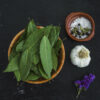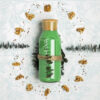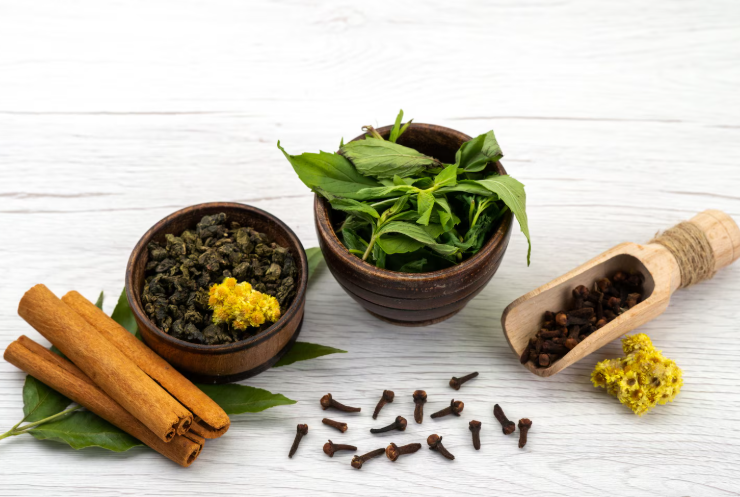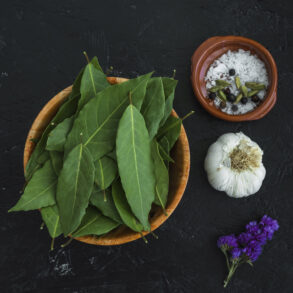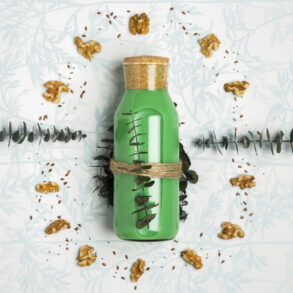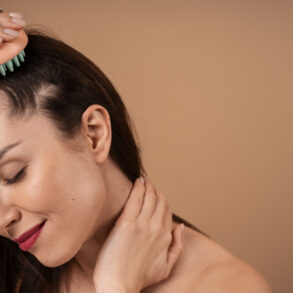For centuries, Ayurveda the 5,000-year-old science of natural healing has provided profound solutions to modern skin problems. Among its many treasures, Ayurvedic herbs for acne stand out as some of the most effective, natural, and holistic remedies available.
Unlike chemical-based treatments that often target symptoms alone, Ayurvedic herbs for acne address the root causes. They balance internal doshas, detoxify the body, and nurture the skin from the inside. These herbs not only clear pimples but also prevent recurrence by purifying the blood and calming inflammation.
In this comprehensive guide, we’ll explore the most powerful Ayurvedic herbs for acne, their benefits, scientific backing, and the best ways to use them through oils, masks, teas, and tonics. Whether you suffer from hormonal acne, cystic breakouts, or post-acne scars. This article will reveal how nature’s pharmacy can restore your skin to its natural balance and beauty.
Understanding Acne with the Help of Ayurveda
Before discussing Ayurvedic herbs for acne, it’s crucial to understand how Ayurveda explians this common skin condition. In Ayurvedic philosophy, acne (called Yauvan Pidika) is the result of imbalanced doshas (biological energies that regulate the body):
- Pitta dosha (fire + water) → Excess heat and inflammation
- Kapha dosha (earth + water) → Oiliness and blockage
- Vata dosha (air + space) → Dryness and uneven texture
When Pitta increases in the body, it overheats the blood (rakta dhatu). This leads to inflammation and toxin buildup. These toxins (ama) surface through the skin as acne, pimples, and redness.
That’s why Ayurvedic herbs for acne primarily work to:
- Cool and purify the blood.
- Detoxify the liver.
- Soothe inflammation.
- Balance sebum production.
The result? Clear, balanced, and radiant skin, which is achieved through holistic, natural means instead of harsh topical chemicals.
Why Choose Ayurvedic Herbs for Acne Over Modern Treatments
In today’s world, acne treatments often rely on antibiotics, retinoids, and harsh cleansers. While they may provide quick relief, they can also cause side effects such as dryness, peeling, and long-term sensitivity. In contrast, Ayurvedic herbs for acne offer a gentle, sustainable alternative.
1. Treat the Root Cause
Rather than simply drying out pimples, Ayurvedic herbs for acne work from within — balancing hormones, reducing inflammation, and purifying blood.
2. 100% Natural and Chemical-Free
Every herb used in Ayurvedic skincare — from neem to turmeric — is organic and safe. This is what makes Ayurvedic herbs for acne suitable for all skin types.
3. No Side Effects
Unlike synthetic products, Ayurvedic herbs nourish and heal without irritation. They maintain the skin’s natural oils and barrier function.
4. Long-Lasting Results
Because Ayurvedic herbs for acne focus on cleansing internal impurities, they prevent future breakouts, which offers lasting clarity.
5. Holistic Healing
Ayurveda connects skin health to digestion, stress, and hormonal balance. Herbs like tulsi, manjistha, and ashwagandha not only clear acne but also support mental and physical well-being. If you’re tired of temporary fixes, switching to Ayurvedic herbs for acne can transform your skin — and your overall health.
Top 15 Ayurvedic Herbs for Acne and Their Benefits
Now let’s dive deep into the most powerful Ayurvedic herbs for acne, how they work, and how to use them effectively. Each herb is a natural powerhouse of antioxidants, anti-inflammatories, and detoxifiers that target acne at multiple levels — from controlling oil production to fading scars.
1. Neem (Azadirachta indica) — The Ultimate Detoxifier
Neem is one of the most celebrated Ayurvedic herbs for acne, thanks to its antibacterial, antifungal, and anti-inflammatory properties. It fights acne-causing bacteria, purifies the blood, and cools excess Pitta.
Benefits:
- Kills acne-causing microbes.
- Prevents blackheads and whiteheads.
- Reduces redness, itching, and inflammation.
- Detoxifies the liver and purifies blood.
How to Use Neem for Acne:
- Face Mask: Mix neem powder with rose water. Apply for 15 minutes and rinse.
- Neem Tea: Boil neem leaves in water and drink once daily to cleanse internally.
- Neem Oil: Dab diluted neem oil on pimples overnight for rapid healing.
Regular use of neem — both topically and internally — makes it one of the most effective Ayurvedic herbs for acne and blemish-free skin.
2. Turmeric (Curcuma longa) — The Golden Healer
No list of Ayurvedic herbs for acne is complete without turmeric. Known for its active compound curcumin, turmeric is anti-inflammatory, antibacterial, and antioxidant-rich.
Benefits:
- Reduces acne inflammation and redness.
- Fades scars and dark spots.
- Regulates oil production.
- Promotes natural radiance and even tone.
How to Use Turmeric:
- Mix turmeric powder with Multani Mitti (Fuller’s Earth) and rose water for a powerful face mask.
- Add turmeric to warm milk for an internal detox.
Turmeric’s versatile healing powers make it one of the most trusted Ayurvedic herbs for acne, suitable for all skin types.
3. Manjistha (Rubia cordifolia) — The Blood Purifier
Manjistha literally means “bright red,” symbolizing its connection to blood purification. It’s one of the key Ayurvedic herbs for acne that works by detoxifying the liver and lymphatic system.
Benefits:
- Purifies blood and clears toxins.
- Reduces pigmentation and acne scars.
- Balances Pitta and Kapha doshas.
- Promotes even skin tone.
Usage:
- Internally: Drink manjistha powder mixed in warm water daily.
- Externally: Combine manjistha with honey and apply as a face mask.
Its gentle yet powerful action makes manjistha one of the most important Ayurvedic herbs for acne and long-term skin health.
4. Tulsi (Holy Basil) — The Skin Savior
Tulsi, or Holy Basil, is known as the “Queen of Herbs” and a core remedy in Ayurveda. It detoxifies, protects, and rejuvenates, making it a must-have among Ayurvedic herbs for acne.
Benefits:
- Antibacterial and antifungal.
- Reduces excess oil production.
- Soothes acne-related inflammation.
- Strengthens the immune system.
How to Use Tulsi:
- Face Pack: Grind fresh tulsi leaves and mix with sandalwood powder. Apply for 20 minutes.
- Tulsi Tea: Drink daily to flush toxins and balance hormones.
As a multipurpose herb, tulsi not only clears skin but also reduces stress. This is one of the root causes of acne flare-ups. That’s why it’s one of the best Ayurvedic herbs for acne in both internal and external healing.
5. Aloe Vera — Nature’s Cooling Gel
Although not exclusive to India, aloe vera is widely used in Ayurvedic skin care for its soothing and rejuvenating effects. It’s often paired with other Ayurvedic herbs for acne to calm and heal the skin.
Benefits:
- Cools inflamed skin.
- Speeds up wound and pimple healing.
- Prevents acne scars.
- Moisturizes without clogging pores.
How to Use Aloe Vera:
- Apply fresh aloe vera gel directly to pimples and scars.
- Combine aloe vera with neem or turmeric powder for an enhanced Ayurvedic herbs for acne mask.
Regular use brings visible clarity and smoothness, proving why aloe vera is considered one of the most soothing Ayurvedic herbs for acne and post-acne care.
6. Ashwagandha (Withania somnifera) — The Stress-Relief Herb for Clear Skin
Ashwagandha is one of the most potent Ayurvedic herbs for acne because it targets one of the biggest modern triggers of breakouts — stress. Chronic stress elevates cortisol levels, increasing oil production and inflammation, which lead to acne. Ashwagandha naturally regulates these stress hormones while rejuvenating the body.
Benefits:
- Reduces stress and hormonal imbalance.
- Boosts immunity and detoxification.
- Prevents acne flare-ups caused by cortisol.
- Promotes youthful, glowing skin.
How to Use Ashwagandha:
- Internally: Take ½ teaspoon of ashwagandha powder in warm milk daily before bed.
- Topically: Mix ashwagandha powder with rose water and aloe vera for a soothing mask.
When used consistently, ashwagandha supports emotional balance and skin harmony. This makes it one of the most comprehensive Ayurvedic herbs for acne in holistic skincare.
7. Triphala — The Triple Cleanser
Triphala, meaning “three fruits,” is a traditional Ayurvedic formula made from Amalaki (Indian gooseberry), Bibhitaki, and Haritaki. It’s known for its cleansing, rejuvenating, and detoxifying properties. Triphala is one of the most widely used Ayurvedic herbs for acne, especially for those dealing with digestive issues and toxin buildup, which are two major acne culprits in Ayurveda.
Benefits:
- Detoxifies the digestive system.
- Balances gut microbiota, improving skin health.
- Reduces inflammation and oxidative stress.
- Promotes clear, smooth skin by purifying blood.
How to Use Triphala:
- Internally: Mix ½ teaspoon Triphala powder in warm water and drink every morning on an empty stomach.
- Externally: Use Triphala powder with honey as a natural exfoliating scrub.
Triphala is one of the rare Ayurvedic herbs for acne that works from the inside out. It helps by balancing digestion, clearing toxins, and preventing future breakouts.
8. Gotu Kola (Centella Asiatica) — The Skin Regenerator
Gotu Kola, known as Brahmi in Ayurveda, is a lesser-known but incredibly powerful herb for acne and scar repair. It boosts collagen production, improves blood circulation, and heals damaged tissue. Which is essential for fading acne scars.
Benefits:
- Promotes wound healing and scar reduction.
- Improves skin elasticity and collagen synthesis.
- Soothes redness and inflammation.
- Detoxifies and revitalizes dull skin.
How to Use Gotu Kola:
- Face Mask: Mix Gotu Kola powder with Multani Mitti and rose water.
- Gotu Kola Tea: Drink regularly to promote internal cleansing.
This herb complements other Ayurvedic herbs for acne by addressing post-acne concerns and improving skin texture naturally.
9. Licorice (Yashtimadhu) — The Brightening Herb
Licorice, or Mulethi, is one of the best Ayurvedic herbs for acne when pigmentation and post-inflammatory marks are a concern. It’s rich in antioxidants and has natural skin-lightening properties that even out tone and reduce scars.
Benefits:
- Lightens dark spots and acne scars.
- Reduces inflammation and redness.
- Protects skin from sun damage.
- Helps regulate hormones, reducing hormonal acne.
How to Use Licorice:
- Face Pack: Mix licorice powder with turmeric and honey. Apply for 15 minutes.
- Tea: Drink licorice root tea once a day for internal balancing.
Licorice not only clears existing acne but also prevents discoloration, making it one of the most beautifying Ayurvedic herbs for acne in skin rejuvenation.
10. Amla (Indian Gooseberry) — The Vitamin C Powerhouse
Amla, or Indian Gooseberry, is one of Ayurveda’s richest sources of Vitamin C and antioxidants. It detoxifies the blood, strengthens the liver, and enhances collagen. All of these make it a perfect fit among Ayurvedic herbs for acne.
Benefits:
- Promotes detoxification and blood purification.
- Prevents acne and premature aging.
- Boosts collagen for smooth, youthful skin.
- Strengthens the immune system to prevent infections.
How to Use Amla:
- Juice: Drink fresh amla juice every morning.
- Mask: Mix amla powder with rose water for a rejuvenating face pack.
The consistent use of amla — both internally and externally — balances Pitta and cleanses the system. This makes it one of the most versatile Ayurvedic herbs for acne and glowing skin.
How Ayurvedic Herbs for Acne Work Synergistically
In Ayurveda, herbs rarely work alone. They are often combined for maximum potency. A combo that helps to cleanse, cool, and balance the body. When combined, Ayurvedic herbs for acne amplify each other’s effects to provide complete skin healing.
1. Detoxification
Herbs like neem, manjistha, and Triphala eliminate toxins (ama) from the liver and blood, preventing clogged pores and inflammation.
2. Anti-Inflammatory Action
Turmeric, tulsi, and aloe vera reduce redness and swelling caused by acne.
3. Hormonal Balance
Ashwagandha and licorice help regulate cortisol and estrogen, which are often responsible for hormonal acne.
4. Healing and Regeneration
Gotu Kola and amla repair damaged skin, fade scars, and restore elasticity.
5. Preventive Care
Together, these Ayurvedic herbs for acne protect against future breakouts by supporting gut health, immunity, and stress management.
Ayurvedic Herbs for Acne in Skincare Formulations
The modern beauty industry increasingly embraces Ayurvedic wisdom. Today, you will find Ayurvedic herbs for acne in serums, oils, face masks, and cleansers. Here’s how they’re typically used:
1. Face Oils
- Kumkumadi Tailam: Combines saffron, sandalwood, and licorice — ideal for acne scars.
- Neem Oil: Antibacterial and detoxifying.
- Manjistha Infused Oil: Purifies and soothes skin.
2. Face Masks
Multani Mitti (Fuller’s Earth) combined with Ayurvedic herbs for acne like turmeric, tulsi, and aloe vera. These provide deep cleansing and instant glow.
3. Toners
Rose water and tulsi-infused toners help maintain pH balance and prevent bacterial growth.
4. Herbal Supplements
Internal formulations like Triphala churna, neem capsules, or ashwagandha powder support long-term hormonal and digestive balance — essential for clear skin.
Each product draws from ancient wisdom, combining time-tested Ayurvedic herbs for acne in modern, easy-to-use forms.
Ayurvedic Diet and Lifestyle Tips for Acne-Free Skin
Herbs alone won’t solve acne if your diet and habits contradict Ayurvedic principles. Ayurveda teaches that true beauty radiates from within. Especially through balanced digestion (agni), reduced stress, and proper detoxification. Pair your Ayurvedic herbs for acne with these lifestyle tips for the best results:
1. Eat Cooling and Pitta-Pacifying Foods
Favor cucumbers, melons, leafy greens, and aloe vera juice. Avoid spicy, fried, and processed foods that aggravate Pitta.
2. Stay Hydrated
Drink plenty of water infused with mint or coriander to cool the system.
3. Sleep Early and Enough
Proper sleep balances hormones and enhances the effects of Ayurvedic herbs for acne.
4. Manage Stress
Practice yoga, pranayama, or meditation daily. Herbs like ashwagandha and tulsi amplify these calming effects.
5. Avoid Harsh Chemicals
Use natural cleansers or herbal powders instead of foaming synthetic ones. When lifestyle and Ayurvedic herbs for acne work together, they deliver lasting clarity and health.
11. Ayurvedic Face Masks Using Ayurvedic Herbs for Acne
One of the most practical ways to harness the power of Ayurvedic herbs for acne is by making simple, effective face masks at home. These DIY treatments are natural, chemical-free, and customized to your skin type. Below are some of the most powerful formulations that blend multiple Ayurvedic herbs for acne to detoxify, tone, and rejuvenate your skin.
1. Neem–Turmeric Purifying Mask
Ingredients:
- 1 tsp neem powder
- ½ tsp turmeric
- 2 tsp Multani Mitti (Fuller’s Earth)
- Rose water (as needed)
Method:
Mix into a paste and apply evenly over your face. Leave for 15 minutes, then rinse with lukewarm water.
Benefits:
This classic combination is one of the best-known Ayurvedic herbs for acne remedies. Neem kills bacteria, turmeric reduces inflammation, and Multani Mitti absorbs excess oil. Together they prevent breakouts and leave your skin smooth and matte.
2. Manjistha and Honey Brightening Mask
Ingredients:
- 1 tsp manjistha powder
- 1 tsp honey
- 1 tsp rose water
Method:
Combine ingredients and apply evenly. Leave for 20 minutes before rinsing off.
Benefits:
Manjistha purifies the blood and fades scars, while honey hydrates and repairs the skin. This Ayurvedic herbs for acne blend brightens dull complexions and promotes a natural glow.
3. Aloe Vera and Tulsi Soothing Mask
Ingredients:
- 2 tbsp fresh aloe vera gel
- 1 tsp tulsi powder or crushed tulsi leaves
Method:
Mix well and apply to affected areas. Leave on for 15–20 minutes and rinse with cool water.
Benefits:
Tulsi and aloe vera, two of the most cooling Ayurvedic herbs for acne, calm redness, heal pimples, and refresh tired skin.
4. Licorice and Sandalwood Anti-Scar Mask
Ingredients:
- 1 tsp licorice (mulethi) powder
- 1 tsp sandalwood powder
- 1 tsp milk
Method:
Blend to form a smooth paste, apply evenly, and rinse after 15 minutes.
Benefits:
Licorice brightens dark spots and sandalwood cools inflammation. This soothing Ayurvedic herbs for acne combination also works as a natural skin polisher.
5. Triphala and Turmeric Detox Mask
Ingredients:
- 1 tsp Triphala powder
- ½ tsp turmeric
- 1 tsp yogurt
Method:
Mix well and apply. Leave for 15–20 minutes and wash off gently.
Benefits:
This deep-cleansing Ayurvedic herbs for acne mask exfoliates dead cells, boosts collagen, and gives a healthy glow.
12. Ayurvedic Tonics and Internal Remedies for Acne
Ayurveda emphasizes inner purification as much as external care. In fact, most Ayurvedic doctors recommend taking internal herbs alongside topical masks for the best results. Here are some of the most effective internal Ayurvedic herbs for acne tonics and formulas.
1. Neem Juice
Drinking neem juice every morning on an empty stomach detoxifies the liver and cleanses blood impurities, making it one of the most potent internal Ayurvedic herbs for acne.
Pro Tip:
If the taste is too bitter, mix it with aloe vera or amla juice for added nutrients.
2. Manjistha Tea
Steep 1 teaspoon of manjistha powder in hot water for 5 minutes. Drink daily for 2–3 weeks. It purifies blood, supports liver function, and enhances skin radiance.
3. Triphala Churna
Take ½ teaspoon of Triphala powder in warm water before bedtime. This ancient Ayurvedic formula supports digestion and detoxification, key factors in controlling acne.
4. Ashwagandha Milk
Mix ½ teaspoon of ashwagandha powder in warm milk and drink before bed. This relaxes your nervous system, reduces cortisol, and balances hormones — an essential step when using Ayurvedic herbs for acne holistically.
5. Tulsi Water Infusion
Boil 8–10 tulsi leaves in water for 5 minutes. Cool and drink throughout the day. This herbal water supports immunity and clears internal toxins. By combining internal tonics and external packs, you create a complete Ayurvedic herbs for acne program that purifies both body and skin.
13. Scientific Evidence Supporting Ayurvedic Herbs for Acne
Though ancient, Ayurvedic herbs for acne are gaining modern scientific validation. Numerous studies highlight their antibacterial, anti-inflammatory, and antioxidant benefits.
- Neem: Research shows neem extracts inhibit Propionibacterium acnes, the bacteria responsible for acne, confirming its effectiveness.
- Turmeric: Curcumin, the main compound in turmeric, has proven anti-inflammatory properties comparable to synthetic drugs but without side effects.
- Manjistha: Studies indicate manjistha improves lymphatic flow and detoxifies the body, promoting clearer skin.
- Licorice: Glycyrrhizin, found in licorice, helps in reducing pigmentation and healing acne scars.
- Ashwagandha: Clinical trials reveal its adaptogenic effects lower cortisol levels, reducing stress-induced acne.
These findings reinforce what Ayurveda has taught for centuries. That Ayurvedic herbs for acne not only treat symptoms but also support the body’s natural healing intelligence.
14. Common Mistakes to Avoid When Using Ayurvedic Herbs for Acne
Even natural remedies require proper usage for best results. Here are common mistakes people make when using Ayurvedic herbs for acne — and how to avoid them.
1. Overusing Face Masks
Too frequent application can strip natural oils. Limit to 2–3 times a week.
2. Ignoring Diet
Eating spicy, fried, or processed foods can counteract the cooling nature of Ayurvedic herbs for acne. Follow a Pitta-pacifying diet.
3. Inconsistent Use
Ayurvedic remedies need consistency. Herbs like neem or manjistha show results after 3–4 weeks of regular use.
4. Mixing Too Many Ingredients
Keep it simple — 2 or 3 herbs at a time. Overmixing can irritate skin.
5. Not Understanding Doshas
Each acne type relates to a different dosha imbalance. Consult an Ayurvedic expert to tailor your Ayurvedic herbs for acne regimen.
15. Modern Skincare Products with Ayurvedic Herbs for Acne
Ayurveda has inspired numerous modern formulations that integrate tradition with innovation. Here are some trending product types infused with Ayurvedic herbs for acne:
1. Herbal Face Washes
Formulated with neem, turmeric, and tulsi for daily purification.
2. Ayurvedic Face Oils
Kumkumadi oil and manjistha-based oils rejuvenate skin and fade scars.
3. Clay and Herbal Masks
Combining Multani Mitti, sandalwood, and Ayurvedic herbs for acne gives instant detoxification.
4. Toners and Mists
Tulsi, rose, and aloe-based toners control oil and maintain skin pH.
5. Supplements
Capsules containing neem, Triphala, and ashwagandha offer internal cleansing for acne-free skin.
Modern beauty brands continue to adapt Ayurvedic herbs for acne into easy-to-use, eco-friendly, and effective products, bridging ancient healing with contemporary skincare.
Conclusion: Rediscover Radiance with Ayurvedic Herbs for Acne
Acne can affect confidence and comfort, but nature already holds the cure. The wisdom of Ayurveda reveals that real healing happens when you treat the mind, body, and skin as one. By consistently using Ayurvedic herbs for acne, you restore internal harmony, remove toxins, and allow your natural beauty to shine.
Herbs like neem, turmeric, manjistha, tulsi, and ashwagandha have served generations — and now they can serve you. Whether used in masks, teas, or oils, these Ayurvedic herbs for acne provide gentle, lasting results without the risks of synthetic products.
Incorporate them into your skincare and daily wellness routine, pair them with a healthy diet, and experience how Ayurveda transforms not just your skin, but your entire sense of well-being.
Final Words
- 100% natural, safe, and effective
- Balances hormones and detoxifies from within
- Prevents breakouts and fades scars
- Strengthens overall skin health
- Time-tested Ayurvedic solution for lasting beauty
Your journey to clear, glowing skin starts with the healing touch of Ayurvedic herbs for acne nature’s timeless gift to humanity.
5 Unique FAQs
1. How long does it take for Ayurvedic herbs for acne to show results?
Usually 3–4 weeks of consistent use bring visible improvements in acne and skin clarity.
2. Can men use Ayurvedic herbs for acne?
Absolutely. These herbs are gender-neutral and effective for all skin types.
3. Are Ayurvedic herbs safe for sensitive skin?
Yes. Most Ayurvedic herbs for acne are gentle, but always do a patch test before applying.
4. Can I mix Ayurvedic herbs with essential oils?
Yes, oils like tea tree or lavender enhance antibacterial action when added in small amounts.
5. Do Ayurvedic herbs for acne help with scars?
Yes. Herbs like manjistha, turmeric, and licorice reduce pigmentation and promote regeneration.

